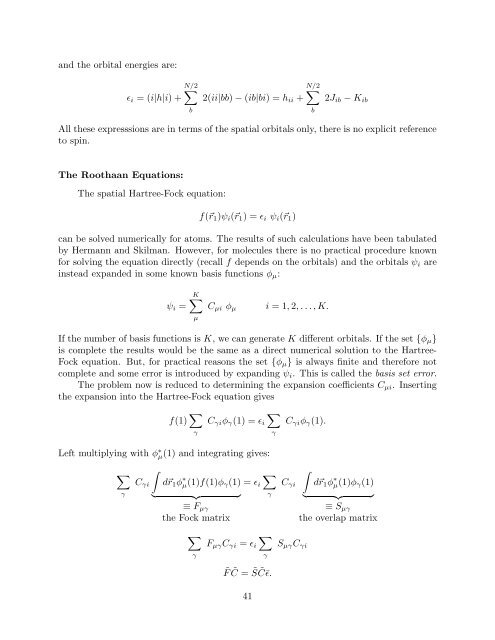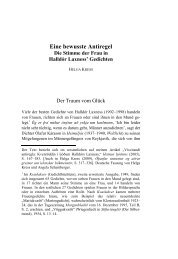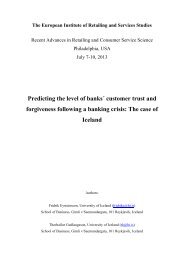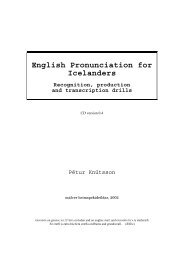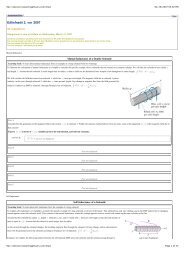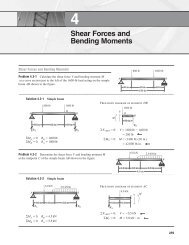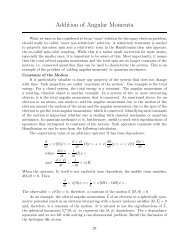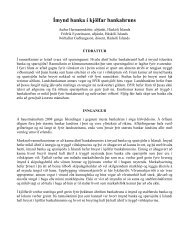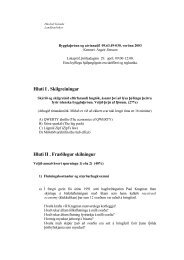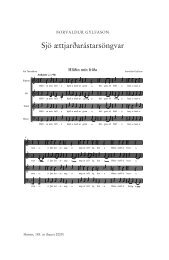The Hartree-Fock approximation underlies the most commonly used ...
The Hartree-Fock approximation underlies the most commonly used ...
The Hartree-Fock approximation underlies the most commonly used ...
Create successful ePaper yourself
Turn your PDF publications into a flip-book with our unique Google optimized e-Paper software.
and <strong>the</strong> orbital energies are:<br />
ǫi = (i|h|i) +<br />
N/2<br />
<br />
b<br />
2(ii|bb) − (ib|bi) = hii +<br />
N/2<br />
<br />
b<br />
2Jib − Kib<br />
All <strong>the</strong>se expresssions are in terms of <strong>the</strong> spatial orbitals only, <strong>the</strong>re is no explicit reference<br />
to spin.<br />
<strong>The</strong> Roothaan Equations:<br />
<strong>The</strong> spatial <strong>Hartree</strong>-<strong>Fock</strong> equation:<br />
f(r1)ψi(r1) = ǫi ψi(r1)<br />
can be solved numerically for atoms. <strong>The</strong> results of such calculations have been tabulated<br />
by Hermann and Skilman. However, for molecules <strong>the</strong>re is no practical procedure known<br />
for solving <strong>the</strong> equation directly (recall f depends on <strong>the</strong> orbitals) and <strong>the</strong> orbitals ψi are<br />
instead expanded in some known basis functions φµ:<br />
ψi =<br />
K<br />
µ<br />
Cµi φµ<br />
i = 1, 2, . . ., K.<br />
If <strong>the</strong> number of basis functions is K, we can generate K different orbitals. If <strong>the</strong> set {φµ}<br />
is complete <strong>the</strong> results would be <strong>the</strong> same as a direct numerical solution to <strong>the</strong> <strong>Hartree</strong>-<br />
<strong>Fock</strong> equation. But, for practical reasons <strong>the</strong> set {φµ} is always finite and <strong>the</strong>refore not<br />
complete and some error is introduced by expanding ψi. This is called <strong>the</strong> basis set error.<br />
<strong>The</strong> problem now is reduced to determining <strong>the</strong> expansion coefficients Cµi. Inserting<br />
<strong>the</strong> expansion into <strong>the</strong> <strong>Hartree</strong>-<strong>Fock</strong> equation gives<br />
f(1) <br />
γ<br />
Cγiφγ(1) = ǫi<br />
Left multiplying with φ∗ µ (1) and integrating gives:<br />
<br />
γ<br />
Cγi<br />
<br />
<br />
dr1φ ∗ <br />
µ(1)f(1)φγ(1) = ǫi<br />
<br />
≡ Fµγ<br />
<strong>the</strong> <strong>Fock</strong> matrix<br />
γ<br />
<br />
γ<br />
FµγCγi = ǫi<br />
<br />
γ<br />
˜F ˜ C = ˜ S ˜ C¯ǫ.<br />
41<br />
γ<br />
Cγiφγ(1).<br />
Cγi<br />
SµγCγi<br />
<br />
dr1φ ∗ µ(1)φγ(1)<br />
<br />
≡ Sµγ<br />
<br />
<strong>the</strong> overlap matrix


